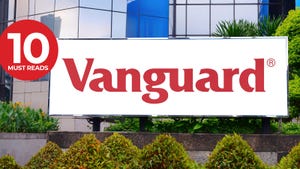Three Pipeline Management TipsThree Pipeline Management Tips
Prospects are hard enough to find; don’t let them slip through the cracks once they’ve begun your process.
April 7, 2022

In our studies of the industry’s elite, we see a variety of techniques for pipeline management. Some advisors stick with yellow notepads, others create spreadsheets, and others use their CRMs. Our conclusion is that the medium doesn’t matter at all, but the process matters greatly.
The industry’s fastest growing advisors actively manage their pipeline. They provide enough, but not too much contact to their prospects and are very thoughtful in each touch point. They’ve also adapted their strategies to reflect our increasingly digital means of communicating.
We thought it might be helpful to share some tips we’ve gathered over the years for effective pipeline management. The goal is to consistently add new prospects to the pipeline, then walk them down a path of becoming a long-term, loyal client. Here are three tips to help make that happen:
- Stratify Your Pipeline
Over time, there are a variety of contacts that make it into your pipeline. If you’re not careful, you end up with a long list that isn’t very actionable. We’d recommend splitting your pipeline into three parts, based on where the relationship currently stands:
Potentials - You’d like to have them as clients, but haven’t approached them about business.
Prospects - You’ve had a business discussion and are still working to close them.
Periodics - They’ve opted not to move forward with you, or said “not right now.”
– Keep a “New Prospect” Checklist
There are lots of “little things” that make a new professional relationship feel high-class and well-organized. We all do things like send follow-up notes from time to time, but most of us could use a more standardized approach. We’d recommend keeping a checklist for new prospects that includes:
Connecting on social media
Performing online research
Sending a handwritten note
Having a non-business contact
Thoughtful touch (i.e. article clipping)
– Start Every Day with Your Pipeline
We worked with an advisor a while back who told us that one new habit he developed had paid for his coaching with us. What was it? He stopped in the lobby every morning to spend a little time with his pipeline. He thought about each person, the next steps and what actions he needed to take, well before he got into the “distraction zone” of his office.
What’s your routine? Do you have your pipeline open on your screen when you arrive each morning? Do you share it with your team or manager every week? Every little bit of accountability helps.
These three tips are structural in nature, but there’s a skill side as well. How can you consistently advance prospects through your pipeline?
A key component of this is thinking about next steps before your prospect meeting. Before the meeting, if you’re thinking about inviting them to your next intimate event, asking them to lunch with their spouse or offering a visit to your office—you’ll be more likely to arrange this next step. Mini-closing isn’t about closing the business; it’s about closing for the next step in the process.
Pipeline management isn’t anything revolutionary, but it works. Prospects are hard enough to find, don’t let them slip through the cracks once they’ve begun your process.
We love new ideas, what’s your system for managing your pipeline?
Stephen Boswell is a partners with The Oechsli Institute, a firm that specializes in research and training for the financial services industry. @StephenBoswell www.oechsli.com
About the Author
You May Also Like







